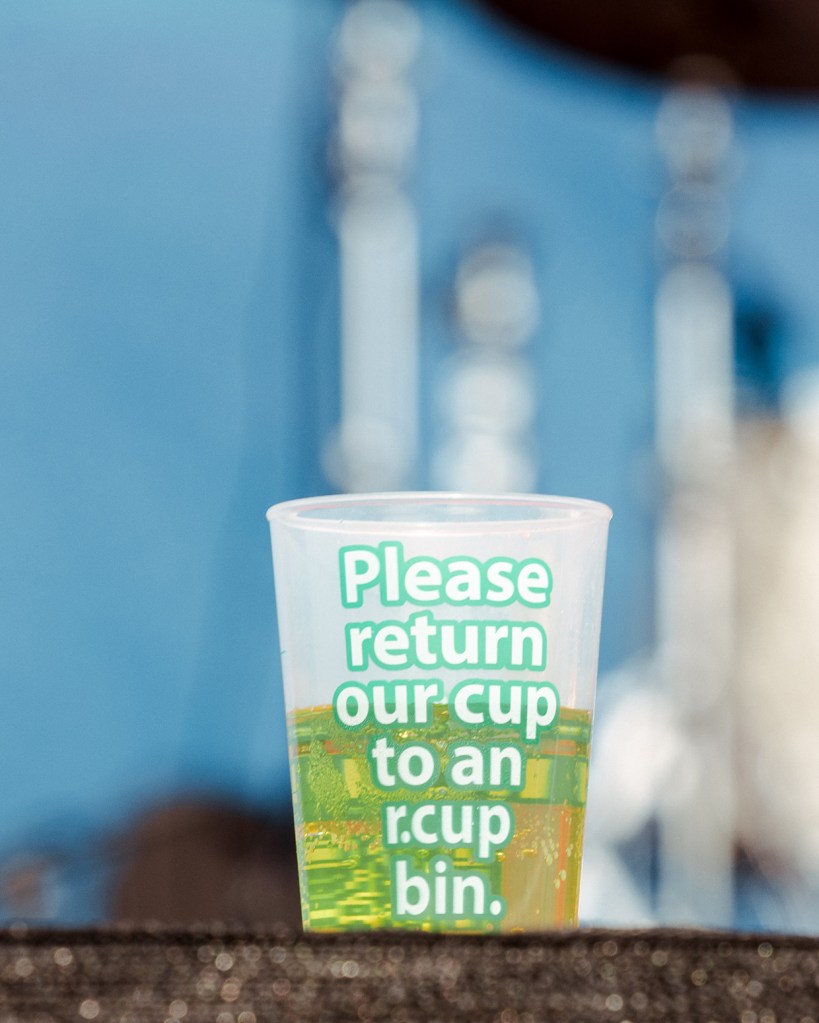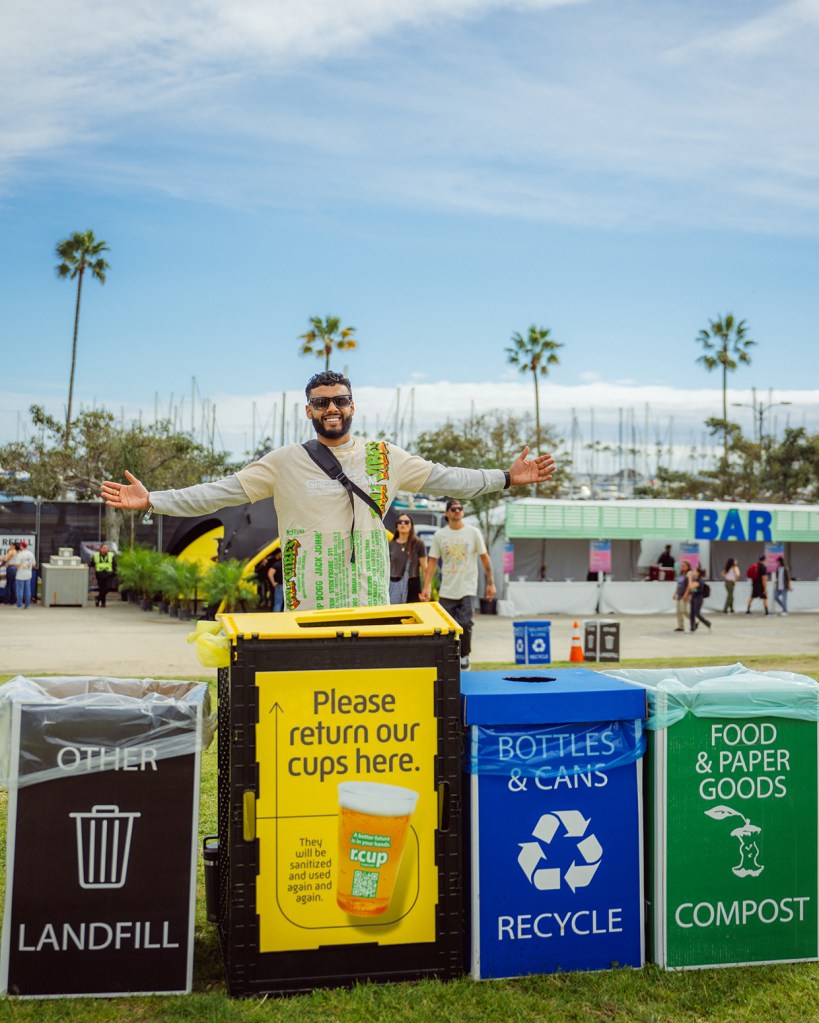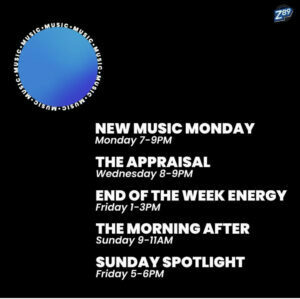How Goldenvoice’s Cali Vibes Is Redefining Festival Sustainability
On its surface, Cali Vibes seems like a normal music festival. In February, the three-day Long Beach, Calif., event held its third annual edition, welcoming 20,000 fans per day with a bill topped by Gwen Stefani, Stick Figure, Slightly Stoopid and Rebelution. But a closer look reveals quiet innovation. Attendees drink from reusable plastic cups instead of single-use ones. Solar panels power the artists lounge. Staff members posted at each garbage station advise guests on whether waste should be thrown away, recycled or composted. Excess food is donated to local shelters.
The festival is a fun time — and a testing ground for sustainability initiatives that may eventually be used throughout the live sector. In 2023, Goldenvoice parent company AEG Presents designated Cali Vibes as an incubator to pilot green measures with the hope of expanding them across AEG’s festival portfolio. Cali Vibes designed its program in partnership with Three Squares, a Los Angeles-based environmental consulting firm.
“Environment is part of the DNA of the festival,” says Goldenvoice vp of festivals Nic Adler, who in his position oversees California festivals including Cali Vibes, Cruel World, Just Like Heaven, Portola, Camp Flog Gnaw and Goldenvoice’s other “non-desert” (i.e., not Coachella or Stagecoach) events, which all typically draw between 20,000 and 30,000 fans per day.
“Cali Vibes is definitely the greenest one,” says Adler, who also helps book the shows, which focus on reggae, roots rock and hip-hop. “It’s harder to do something on the scale of 125,000 people a day [like Coachella or Stagecoach] versus 30,000, so the festivals we oversee are testing grounds for our larger events.
“We’re all aware that bringing 50 truckloads of stuff and 50,000 people to a site is not sustainable,” he continues. “But there’s a way to go at it where everybody does better.”
Goldenvoice doesn’t promote Cali Vibes as a green festival — but it certainly could. That starts with how fans reach the festival grounds at Long Beach’s Marina Green Park. Cali Vibes promotes public transit use by offering attendees free or discounted rides through a partnership with L.A. Metro and electric scooter company Bird. (Scientists cite the emissions from fan travel as the single biggest challenge in greening concerts.) This year, most Cali Vibes transport vehicles were electric. While the festival can’t control how artists arrive at the site or how the event’s equipment is delivered, its “no idling” rule reduces emissions by requiring cars and gas-powered golf carts to be turned off when not in motion. Adler says the rule will likely be implemented at Coachella 2024.

Elsewhere, festival signage is made from wood so it can be reused, while thousands of square feet of plastic banners at stages are taken by upcycling company Rewilder after the event wraps and sewn into tote bags and backpacks sold at the following year’s merchandise stand. Unsold merch is refashioned into staff uniforms. This year, the festival’s reusable cup program, r.Cup, had an 81% return rate, which translated to the elimination of 300,000 single-use plastic cups. Water is served in aluminum cans, and refill stations are located throughout the event. Each ticket includes a $5 sustainability charge — Adler says it helps fans “feel like they’re participating” — which is split between greening festival operations and nonprofits including Surfrider Foundation and Plastic Pollution Coalition; Cali Vibes has donated $130,000 since the program’s inception.
Such forward-facing initiatives are crucial, Adler explains, because “festivals are inherently discovery-based in terms of new music, new people, new food” and can instill new habits that might stick with attendees. “We are an example,” he says, that could inspire fans to get their own reusable cup, learn to compost or go vegetarian.
Roughly 20% to 30% of food vendors at Goldenvoice festivals are vegan, with all vendors required to offer at least one vegetarian option. When Morrissey and Siouxsie Sioux headlined Cruel World in 2022 and 2023, respectively, both artists required that meat not be sold, resulting in roughly 80% vegan options — and demonstrating the power artists have to demand sustainability initiatives. Meanwhile, festival staff collect and compost food waste from vendors and divert excess food to local nonprofits and homeless shelters.
Beyond the solar-powered artists lounge — which Adler says has become a point of pride even if it isn’t “that great-looking” — the fest has shifted to clean energy in several areas, including solar-powered light towers in parking lots, merch stations and bathroom zones, and battery-powered LED lights in some locations. In 2023, the use of renewable diesel in generators and heavy equipment eliminated 43 tons of carbon emissions.
And since festival greening often means entering unknown territory, Adler says his team “spends a lot of the year going to random parking lots to meet someone to test a solar battery. We’ve seen more things we don’t like than things that will work, but that’s the process to find the right products.”

When it comes to green initiatives, Adler thinks the live sector is “crossing the threshold.” As sustainable technologies become more widely available and adopted, “the more prices are going to come down, so more festivals will want to use solar batteries or electric vans. The minute [the costs] start affecting the bottom line in a positive way, there’s going to be a full push for all of this.”
That hasn’t happened just yet, but even so, Adler can’t “recall a time in this business where it has been easier to use these alternatives.” He predicts that in five to 10 years, green energy tech will be established and affordable enough for producers to feel confident using it for large-scale stages and other major energy use points.
But for Adler, the goal is not necessarily to create a zero-emissions festival — “If you restrict it too much, people might not come back” — but instead an enjoyable, inspiring environment that implements and showcases ever-improving sustainability components and which vendors, artists and fans are happy to return to.
“You must create the opportunity for people to do the right thing,” he says. “That’s what our team is focused on the most: Have we created enough opportunities for people to participate in doing better?”
This story will appear in the March 30, 2024, issue of Billboard.
Powered by Billboard.

